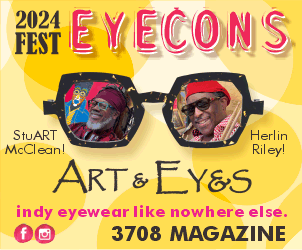Brandan “Bmike” Odums will unveil his first museum solo show next month, entitled NOT Supposed 2-Be Here. The exhibition opens on Saturday, January 18 and will act as a retrospective, featuring his past work and brand new site-specific installations.
A museum may be an unusual setting for Bmike’s work, as he is known for splashing color and consciousness on large walls in public spaces, but the mission statement of Tulane University’s Newcomb Art Museum, to “build on the Newcomb College legacy of education, social enterprise and artistic experience by presenting meaningful, enriching and transformative original exhibitions of socially-engaged art that engages communities both on and off campus,” makes it the perfect partner to display his work with respect and ingenuity.
Tulane continues to state that, “More than a museum, Newcomb has become a cultural cornerstone for artistic and social conversation, as well as a place of fellowship among Tulane students and the people of New Orleans.” What better place for Bmike to showcase his video art, painting, design, murals, and sculptures?
Bmike is known for his passionate opinions, as much as he is known for his beautiful, detailed, recognizable style. That point of view will be highlighted and celebrated in the new exhibit. “I think truth-telling is activism. It’s always going to be a form of activism: to assert my story in a space where people won’t necessarily want to hear it. There are certain responsibilities that are innate with being an artist. Resistance is resistance. Just the fact that you exist showcases a type of activism. I represent a type of reality that makes people uncomfortable in a lot of ways. Sometimes I’m in white spaces, where I’m a type of Black male they haven’t seen—ever …that’s a type of activism,” he told OffBeat in his November 2019 cover story.
Bmike will be “addressing the idea of who or what kind of art belongs in a museum. The show explores four different takes on inclusion drawn across notions of art, race, place and accessibility,” the museum’s description of the show asserts. Read more about what to expect and what those “four different takes” entail here.




